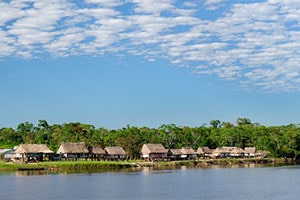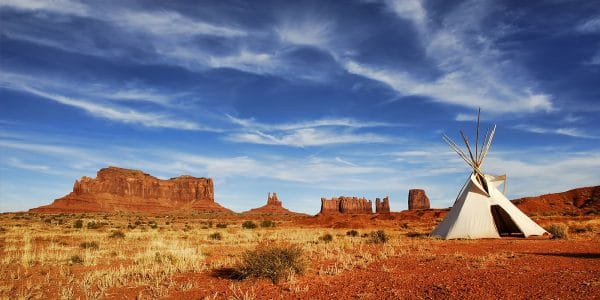 The Bureau of Indian Affairs (BIA) was created in 1824 and charged with managing the relationship between the Federal Government and Indian tribes and Alaska Native villages. It was originally established by then Secretary of War, John C. Calhoun, to oversee and carry out the federal government’s trade and treaty relations with the tribes. Eventually, the BIA became the office that implemented government policies designed to subjugate and assimilate American Indians and Alaska Natives.
The Bureau of Indian Affairs (BIA) was created in 1824 and charged with managing the relationship between the Federal Government and Indian tribes and Alaska Native villages. It was originally established by then Secretary of War, John C. Calhoun, to oversee and carry out the federal government’s trade and treaty relations with the tribes. Eventually, the BIA became the office that implemented government policies designed to subjugate and assimilate American Indians and Alaska Natives.
The role of the BIA has evolved and changed considerably over the last century. Today, the BIA promotes and implements federal policies that are designed to foster and support Indian self-determination.
The Goals Of The BIA In 2020
 The days of pushing American Indians and Alaska Natives to assimilate into the mainstream American culture are gone. The modern Bureau of Indian Affairs’ mission is to “enhance the quality of life, to promote economic opportunity and to carry out the responsibility to protect and improve the trust assets of American Indians, Indian tribes and Alaska Natives.”
The days of pushing American Indians and Alaska Natives to assimilate into the mainstream American culture are gone. The modern Bureau of Indian Affairs’ mission is to “enhance the quality of life, to promote economic opportunity and to carry out the responsibility to protect and improve the trust assets of American Indians, Indian tribes and Alaska Natives.”
The BIA seeks to fulfill its mission by partnering with tribes to help them achieve their own goals for self-determination. It also maintains its responsibilities under the Federal-Tribal trust and government-to-government relationships.
How The BIA Affects Today’s Native Americans And Tribespeople
 The number American Indian or Alaska Native leaders and employees of BIA is at the highest number in its history. This means the majority of those employed by BIA have first-hand knowledge of the issues facing Native Americans.
The number American Indian or Alaska Native leaders and employees of BIA is at the highest number in its history. This means the majority of those employed by BIA have first-hand knowledge of the issues facing Native Americans.
The BIA serves 573 federally-recognized tribes through four offices:
The Office of Indian Services (OIS). OIS manages and implements the BIA’s general assistance, disaster relief, Indian child welfare, tribal government, Indian Self-Determination, and reservation roads programs. It also works to improve the safety of BIA roads and bridges on Indian lands and provides additional services to combat family and domestic violence in American Indian and Alaska Native communities.
OIS offers training to improve the efficiency of awarding Indian Self Determination and Education Assistance Act (ISDEAA) funding, improve the monitoring of Individual Indian Monies (IIM) accounts to protect the account holder’s trust income and continue to meet the statutory requirement of annually identifying tribes that have been federally recognized to receive services from the federal government.
 The Office of Justice Services (OJS). OJS directly operates or funds law enforcement, tribal courts and detention facilities on federal Indian lands.
The Office of Justice Services (OJS). OJS directly operates or funds law enforcement, tribal courts and detention facilities on federal Indian lands.
The Office of Trust Services (OTS). OTS carries out Indian Affairs trust responsibilities for Indian tribes as well as individuals. It also oversees all BIA activities associated with management and protection of trust and restricted lands, natural resources, and real estate services. Its responsibilities also cover land-related functions related to Indian trust owners including acquisition, disposition, rights-of-way, leasing, and sales. The OTS assists tribes and tribespeople in the management, development, and protection of trust land and natural resource assets. It administers a wide range of programs covering real estate services, land title and records, probate, natural resources, forestry and wild land fire management, irrigation, power, and safety of dams.
The Office of Field Operations (OFO). OFO oversees BIA’s 12 regional offices and 83 agencies that work to carry out BIA’s mission at the tribal level. The Field Operations Directorate is responsible for administrating, developing, and implementing organizational objectives for the OJS Divisions of Law Enforcement, Drug Enforcement, Corrections, and Highway Safety. These programs integrate key national goals, priorities, and values. OFO programs also provide technical assistance to BIA direct service programs and Indian tribes relating to public safety.
Importance Of Legal Assistance When Facing A Tribal Legal Issue
 At some point in your life, you will likely need legal assistance. The legal landscape is confusing and intimidating for most people, and it is full of landmines that can make your problems worse. When you are faced with tribal legal issues, the legal landscape becomes even more challenging. If you are dealing with a matter before the BIA, you need to have experienced legal counsel at your side to ensure that your rights are protected. An attorney with experience in all aspects of tribal law and who knows their way around the BIA office labyrinth can save you time and money in the long run.
At some point in your life, you will likely need legal assistance. The legal landscape is confusing and intimidating for most people, and it is full of landmines that can make your problems worse. When you are faced with tribal legal issues, the legal landscape becomes even more challenging. If you are dealing with a matter before the BIA, you need to have experienced legal counsel at your side to ensure that your rights are protected. An attorney with experience in all aspects of tribal law and who knows their way around the BIA office labyrinth can save you time and money in the long run.
Tribal law attorneys also understand the unique nature of tribal sovereignty and the interrelationship between tribal law, federal law, and state law. That interrelationship can make a seemingly simple matter very complex. An experienced tribal law attorney is essential for any case involving the Indian tribes or a tribesperson. It is also wise to consult with an Indian law attorney before entering any business arrangement with the Indian tribes.
How Can The Attorneys At Parnall And Adams Law Help You?
The attorneys at Parnall & Adams Law are knowledgeable in all aspects of tribal law. They have represented clients in state, federal, and tribal courts and have dealt with countless tribal issues. Their cases have involved disputes regarding natural resource development agreements, business leases, taxation, right-of-way acquisition, tribal employment rights ordinances, BIA matters, and much more. They know the various laws that govern tribes and their unique traditions and culture. Let their attorneys provide you with the benefit of their expertise in your situation, no matter how challenging. Contact Parnall & Adams today for questions or assistance with your tribal law or other legal issue.

